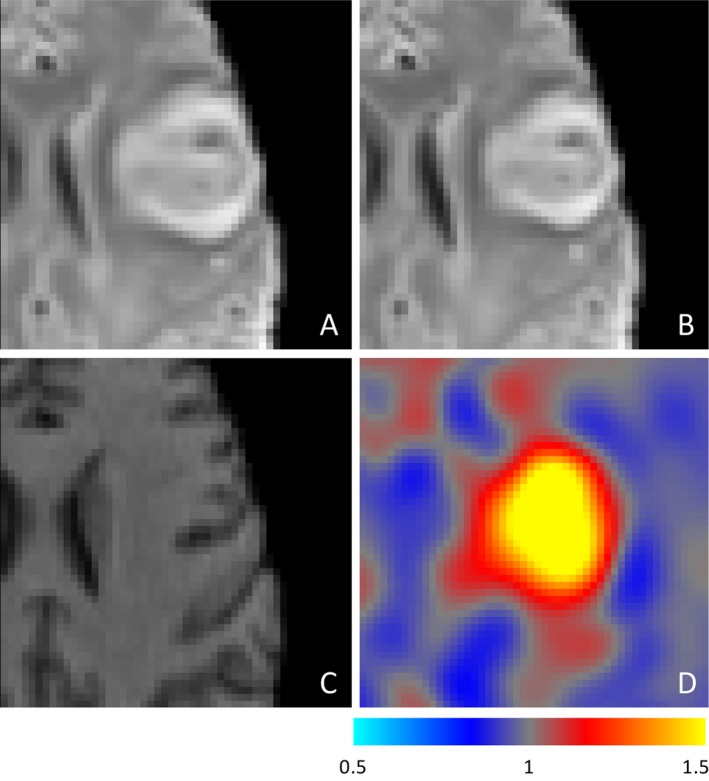Figure 3.

Example of the ability of nonlinear registration to correct for distortion due to edema and hemorrhagic transformation at 1 week. T2‐weighted FLAIR images registered using rigid body registration (A) and nonlinear registration (B) to the presenting T1‐weighted structural image (C). Panel D shows the Jacobian output of the nonlinear registration, where the intensity reflects the degree of compression required in each voxel, demonstrating that nonlinear registration is correcting for distortion associated with the stroke lesion itself rather than improving registration more generally.
